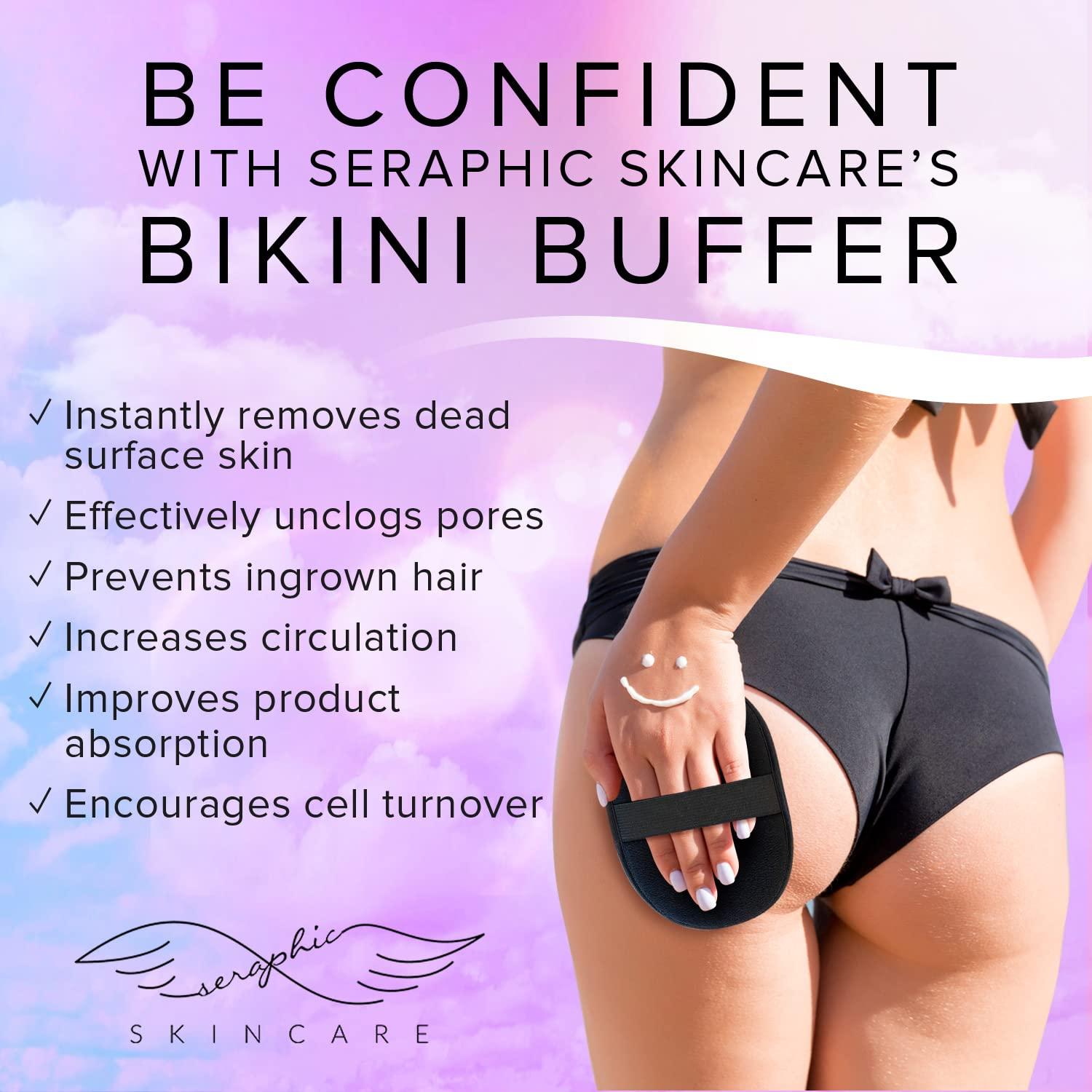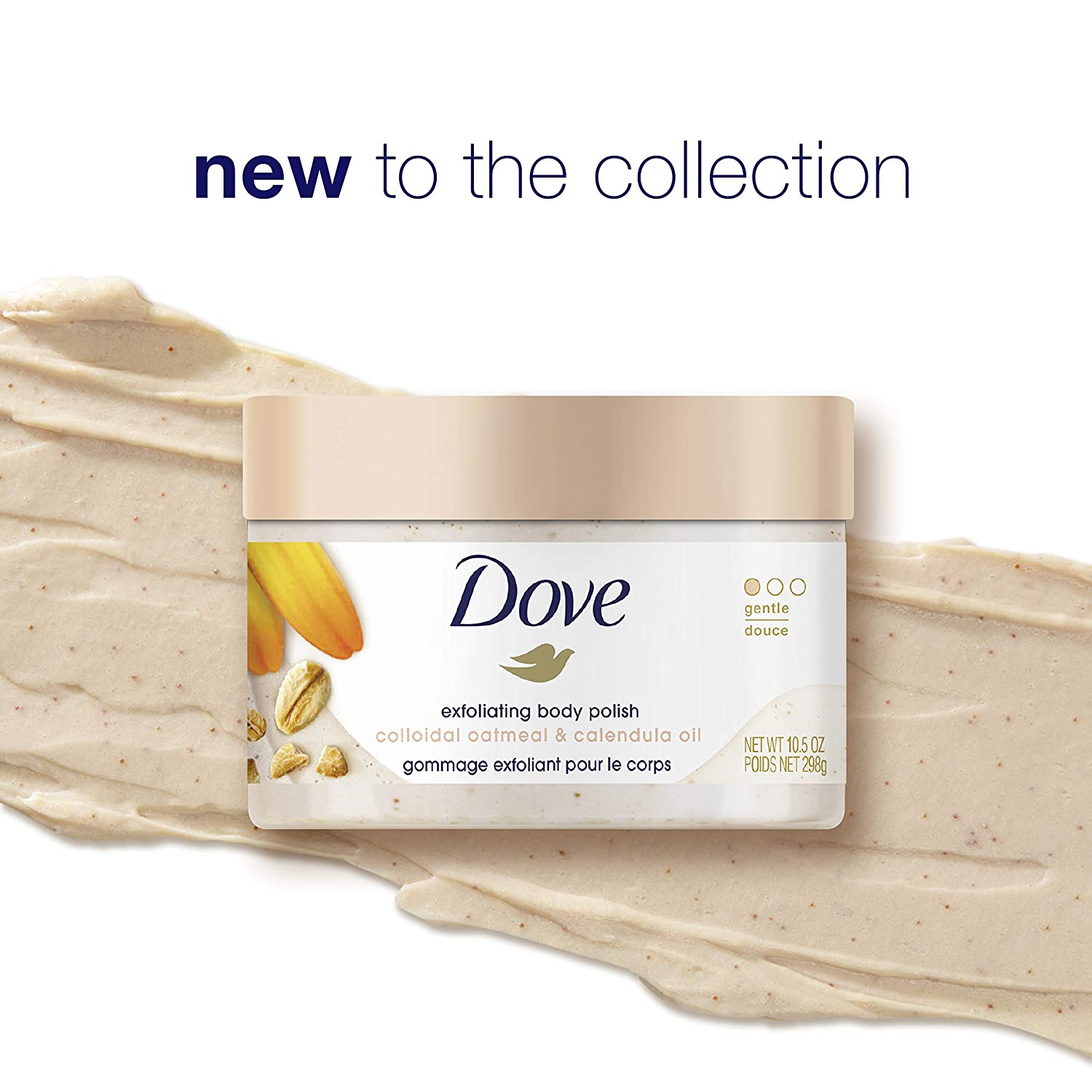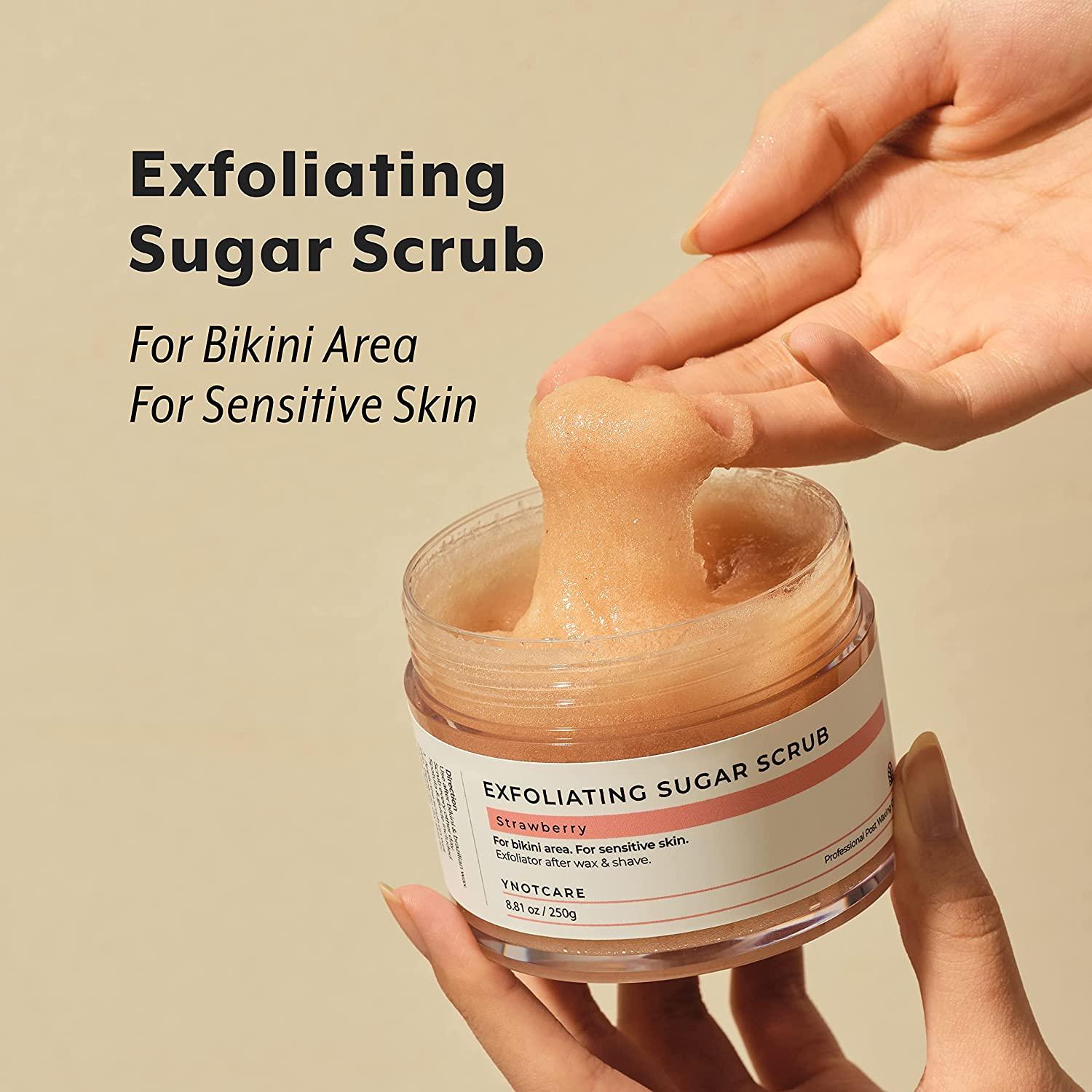Best Exfoliating For Bikini Area - Smooth Skin Secrets
Getting skin that feels truly soft and looks clear around your swim lines can feel like a bit of a puzzle for many folks. You might find yourself wondering how to get rid of those little bumps or annoying hairs that curl back into your skin. It's a common thing, you know, and lots of people want to figure out the best way to make that delicate part of their body feel really good and look its very best. This kind of care is about more than just how things appear; it's about comfort and making sure your skin stays happy, too it's almost.
Thinking about your skin's outer layer, it's always shedding old bits and making new ones. Sometimes, though, those old bits hang around a little longer than they should, which can cause some issues, especially in places where hair grows back after you've taken it off. When you help your skin let go of those old flakes, you're making a clear path for new hair to grow out properly, which can really help with those pesky little red spots or hairs that get trapped underneath. It's about helping your body's natural process along, in a way.
So, if you've been looking for ways to get that soft, even feeling in your private skin, you're in a good spot. We're going to talk about how to choose the right things to help your skin shed its old bits, when to do it, and what to do afterwards to keep things feeling fine. It's not about being perfect, just about finding what works well for you and your body's covering. We'll walk through some simple steps and ideas that could make a real difference for your skin, just a little.
- Daphne Joy Ethnicity
- Mark Harmon Sons Photos
- Kate Middleton Tears
- Is There A Season 4 Of Reacher
- Sue Bird And Megan Rapinoe Wedding
Table of Contents
- What's the deal with bikini area exfoliation?
- How to Pick the Best Exfoliating for Bikini Area?
- When Should You Exfoliate Your Bikini Area?
- What Happens After Exfoliating Your Bikini Area?
What's the deal with bikini area exfoliation?
You might hear people talk about "exfoliating" and wonder what it really means for a place like your bikini area. Well, put simply, it's about helping your skin get rid of its old, dead surface cells. Your skin is always making new cells and pushing the old ones up to the top. Sometimes, those old cells just don't flake off like they should, and they can build up. This build-up can make your skin look a little dull or feel rough, and it can also cause problems, especially where hair grows. It's kind of like sweeping away old leaves so new plants can grow, you know.
For the skin around your swim lines, this process is particularly helpful. That part of your body can be a bit more sensitive, and the hair there is often thicker and curlier. When you remove hair from this area, whether by shaving, waxing, or another method, the new hair trying to grow back can sometimes get stuck under those old skin cells. This leads to what people often call ingrown hairs, which are little red bumps that can be itchy or even sore. So, really, helping your skin shed those old bits is a way to clear the path for new hair and keep your skin feeling much happier, actually.
It's not about scrubbing your skin raw; that would be a bad idea. It's about being gentle and consistent with a method that works for your body. There are a few different ways to go about it, and we'll get into those shortly. The main idea is to make sure your skin can breathe and that new hair can come through without getting trapped, which is that. It's a step that many people find really makes a difference in how their skin looks and feels in that private spot.
Why Bother with Exfoliation for Bikini Area?
The biggest reason people consider exfoliation for their bikini area is to deal with those bothersome ingrown hairs. When you take away hair, the new hair that starts to grow can sometimes curl back into the skin instead of growing out. Old skin cells sitting on the surface can make this problem worse by blocking the hair's way out. By gently clearing away those old cells, you give the hair a better chance to grow upwards, as it should. This can mean fewer red bumps and less irritation, which is pretty much what everyone wants for this delicate skin.
Beyond preventing ingrowns, there's also the matter of skin texture. When you regularly help your skin shed its old layers, the surface feels much smoother and softer to the touch. It's like polishing a surface; it just feels nicer. This can also help your skin look more even in tone, as old, dull skin cells can sometimes make the area appear a bit uneven or shadowy. So, if you're aiming for a silky feel and a clear look, this step can be a big help, you know.
Another point is that when your skin is free of old cell build-up, any moisturizers or skin-soothing products you put on afterwards can actually get into your skin better. They won't just sit on top of a layer of dead skin. This means your skin can get more of the good stuff it needs to stay hydrated and calm. It's about making your whole skin care routine more effective, basically. It helps your skin feel more comfortable and healthy overall, too it's almost.
How to Pick the Best Exfoliating for Bikini Area?
Choosing what to use for helping your skin shed its old bits in the bikini area can feel a little tricky, since this skin is often more sensitive than other parts of your body. You want something that gets the job done without causing any upset. There are generally two main types of things you can use: those that physically rub away old skin, and those that use gentle chemicals to loosen it up. The "best exfoliating for bikini area" really comes down to what your skin likes and what feels good to you. It's a matter of finding a balance, so.
When you're looking for something to use, think about how gentle it is. Rough scrubbing or harsh ingredients are usually not a good idea for this sensitive spot. You want something that can do its work without making your skin feel red, sore, or itchy afterwards. It's often a process of trying a few different things to see what your skin responds to well. What works for one person might not be the top choice for another, and that's perfectly fine, you know.
Consider also what your main goal is. Are you trying to prevent ingrown hairs, or are you just looking for a smoother skin feel? Some options are better for one goal than another. We'll talk about specific types of products and tools next, to give you a clearer idea of what might be a fine pick for your needs. It's all about being kind to your skin while still getting the results you want, anyway.
Gentle Physical Options for Bikini Area Exfoliation
When we talk about physical ways to help your skin shed its old cells, we mean things that gently rub them away. For the bikini area, "gentle" is the word to remember. You definitely don't want anything that feels scratchy or rough. One very simple option is a soft washcloth. After you've cleaned the area, you can gently rub the damp washcloth in small, light circles over the skin. This can help lift off those old skin flakes without being too harsh, basically.
Another popular choice is a sugar scrub. Sugar grains are rounder than salt, which makes them less likely to scratch your skin. Look for scrubs that have very fine sugar particles and are mixed with nourishing oils, like coconut or jojoba oil. These oils help the scrub glide over your skin and leave it feeling soft and hydrated afterwards. You take a small amount, apply it to damp skin, and use very light, circular motions. Then you rinse it off completely. Remember, less pressure is more here, you know.
Some people also like to use a soft brush made for the body, or even a special brush meant for dry brushing. If you go for a brush, make sure the bristles are really soft and not stiff at all. You can use these on dry skin before you shower, or with a gentle cleanser in the shower. Again, the key is a very light touch. The goal is to gently encourage those old cells to leave, not to scrub them away with force. Too much pressure can cause redness or irritation, which is the opposite of what we want, pretty much.
You might also find some products that have tiny, smooth beads. If you choose something like this, make sure the beads are natural and smooth, not rough plastic ones, which can be bad for the environment and for your skin. The idea with any physical method is to be very, very kind to your skin. Think of it as a soft polish rather than a harsh scrub. If your skin feels sore or looks red after, that's a sign you're being too rough or the product isn't a good fit for you, so.
Chemical Choices for Bikini Area Exfoliation
When we talk about "chemical" ways to help your skin shed its old cells, it sounds a bit strong, but it really just means using gentle liquids that loosen the bonds between old skin cells. These liquids don't involve any scrubbing. Two common types you might hear about are AHAs (Alpha Hydroxy Acids) and BHAs (Beta Hydroxy Acids). These are usually found in toners, lotions, or special pads. They work by gently dissolving the "glue" that holds old skin cells together, allowing them to flake off naturally, as a matter of fact.
AHAs, like glycolic acid or lactic acid, are good for the very surface of your skin. They help to make the skin feel smoother and can also help with evening out skin tone. They are water-loving, so they work well on the skin's top layer. For the bikini area, you'd want to start with a very low percentage, maybe 5% or less, to see how your skin reacts. You just put a little bit on a cotton pad and gently swipe it over the clean, dry skin. There's no need to rinse it off unless the product says to, you know.
BHAs, like salicylic acid, are a bit different because they can get into oil. This means they can go a little deeper into the skin's pores, which is very helpful for people who get a lot of ingrown hairs or little bumps. Salicylic acid can help to clear out the hair follicles, making it easier for new hair to grow out without getting trapped. Again, start with a low percentage, usually 1% or 2%, and apply it gently. If you have very sensitive skin, you might want to try a product with a lower percentage or use it less often at first, just a little.
With both AHAs and BHAs, it's really important to start slowly. Maybe use it just two or three times a week at first, and then you can use it more often if your skin handles it well. Always pay attention to how your skin feels. If you notice any stinging, burning, or redness that lasts, it might be too strong for you, or you might be using it too often. These chemical options can be a fine pick for people who find physical scrubs too rough or who have very persistent ingrown hair problems, so. They offer a way to get smooth skin without any rubbing, which is sometimes what your skin prefers.
When Should You Exfoliate Your Bikini Area?
Figuring out the right time to help your skin shed its old bits in the bikini area is pretty important for getting good results without causing any upset. The timing often depends on when you take away hair from that spot. A good rule of thumb is to exfoliate a day or two before you plan to shave or wax. This helps to lift away those old skin cells, making for a smoother surface for your hair removal tool to glide over. It also helps to free any hairs that might be stuck under the skin, making them easier to remove, kind of.
If you shave, exfoliating the day before can make a big difference in getting a closer shave and reducing the chances of irritation or bumps afterwards. You're basically preparing the ground for the hair to be cut cleanly. If you wax, exfoliating a day or two beforehand can help the wax grab the hair better and might make the process feel a little less uncomfortable. It helps to get rid of any dry, flaky skin that could get in the way of the wax sticking to the hairs properly, you know.
After hair removal, it's usually a good idea to wait a day or two before you exfoliate again. Your skin can be a little sensitive right after shaving or waxing, so giving it a short break is wise. Once that initial sensitivity has passed, you can start exfoliating again, maybe every two to three days, to help prevent new ingrown hairs from forming. The exact frequency really depends on your skin and how it reacts. Some people might find that two times a week is enough, while others might do it every other day, like your.
It's also worth thinking about your overall skin type. If your skin is very sensitive, you might want to exfoliate less often, perhaps just once a week. If your skin is less reactive and you're prone to a lot of ingrown hairs, you might find that more frequent, gentle exfoliation helps. Listen to your skin; it will tell you what it likes. If you see redness, feel stinging, or notice any discomfort, it's a sign to cut back on how often you're doing it or to try a different product, basically. Consistency, rather than intensity, is often the key to getting smooth skin over time, so.
What Happens After Exfoliating Your Bikini Area?
Once you've finished helping your skin shed its old bits, what you do next is just as important for keeping your bikini area feeling happy and looking good. Your skin has just had a gentle cleaning, and now it's ready for some extra kindness. The very first thing to do is to rinse the area thoroughly with lukewarm water. Make sure all the product is gone, whether it was a scrub or a chemical liquid. Leaving any residue can sometimes cause irritation, you know.
After rinsing, gently pat the skin dry with a soft, clean towel. Don't rub harshly, as this can undo some of the good work you just did and might irritate your skin. A soft pat is all you need. Once your skin is dry, it's time to give it some moisture. This is a very important step because exfoliation can sometimes make your skin feel a little bit thirsty. Putting on a good moisturizer helps to put moisture back into your skin and makes it feel soft and comfortable, actually.
Look for a moisturizer that is free of strong smells and dyes, especially for this sensitive area. Ingredients like aloe vera, shea butter, or hyaluronic acid are often good choices because they help to soothe and hydrate the skin without causing problems. Apply a small amount and gently rub it in until it's absorbed. This step helps to keep your skin supple and can also create a protective layer, which is that. It helps to prevent dryness and can make your skin less likely to get irritated.
Keeping Your Bikini Area Smooth After Exfoliation
Getting your
- Does Alexis Bledel Have Kids
- Diddy And Daphne Joy
- Chris Evans And Ryan Reynolds
- Plath Childrens Names And Ages
- Zach Galifinakis Wife

Seraphic Skincare Bikini Buffer Exfoliating Scrub Mitt - Skin

Best Exfoliator for Your Bikini Area: Softest Summer Skin!

YNOTCARE Exfoliating Sugar Scrub for Bikini Intimate Area - Sensitive